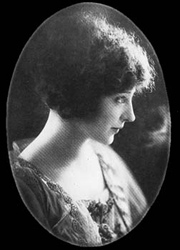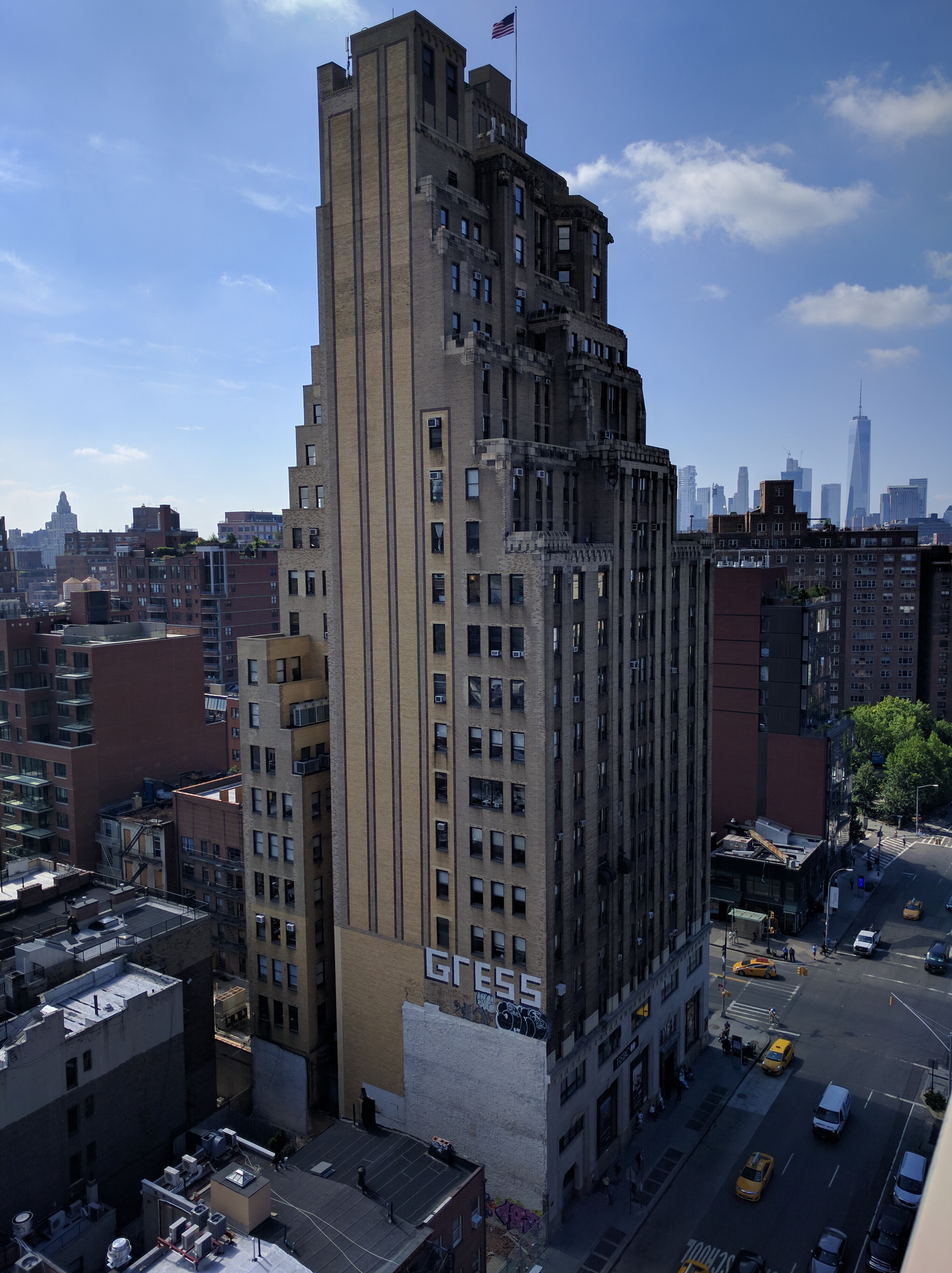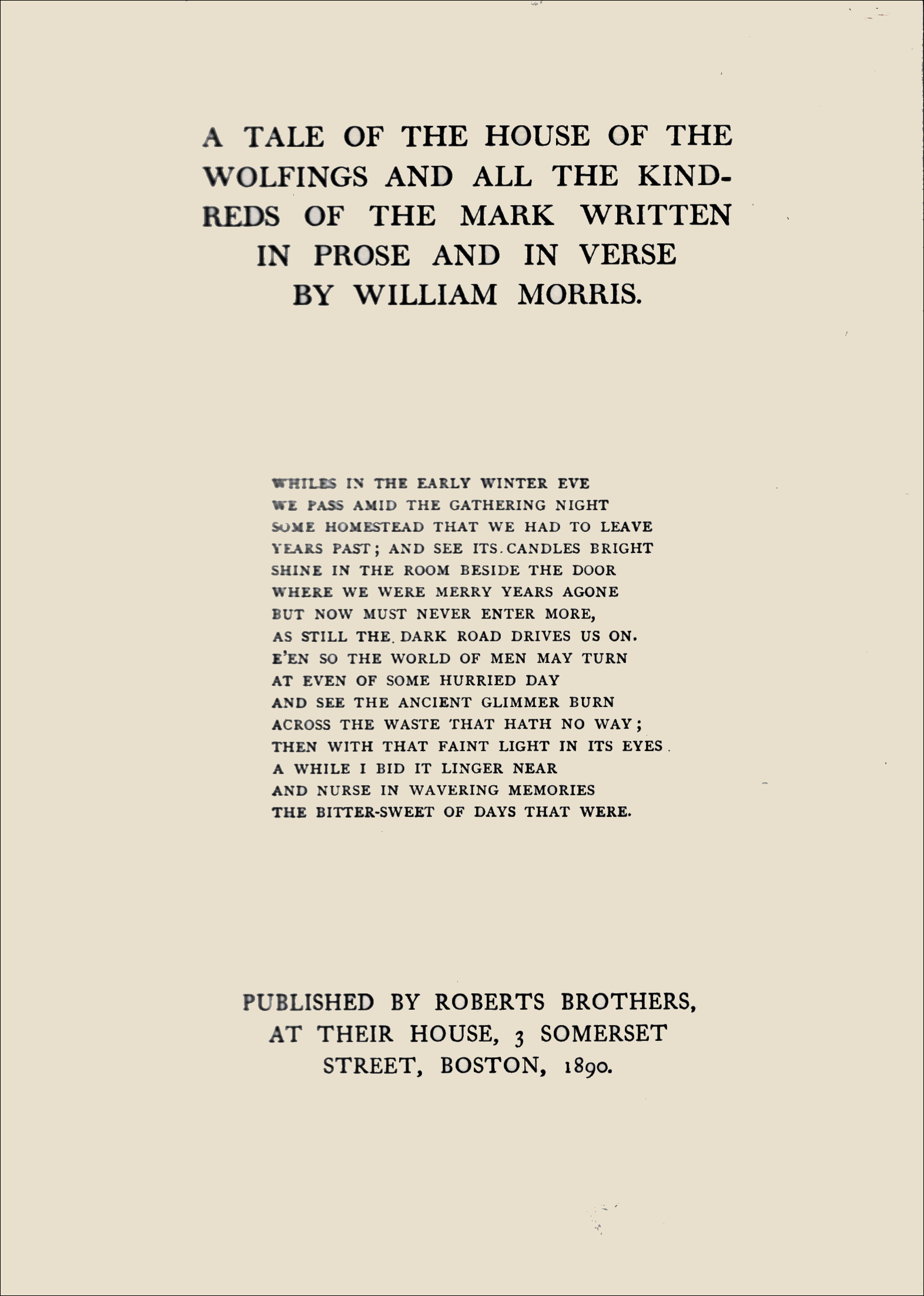|
Black Spring (novel)
''Black Spring'' is a book of ten short stories by the American writer Henry Miller, published in 1936 by the Obelisk Press in Paris, France. ''Black Spring'' was Miller's second published book, following ''Tropic of Cancer'' and preceding ''Tropic of Capricorn''. The book was written in 1932-33 while Miller was living in Clichy, a northwestern suburb of Paris. Like ''Tropic of Cancer'', the book is dedicated to Anaïs Nin. Contents The ten short stories in the book are: :#The Fourteenth Ward :#A Saturday Afternoon :#Third or Fourth Day of Spring :#The Angel is My Watermark! :#The Tailor Shop :#Jabberwhorl Cronstadt :#Into the Night Life :#Walking Up and Down :#Burlesk :#Megalopolitan Maniac Publication History ''Black Spring'' was published by Obelisk Press in Paris in 1936 but not published in the United States until 1963 due to obscenity laws. When the Grove Press “Black Cat” edition was released, several of the stories not considered obscene had already been published ... [...More Info...] [...Related Items...] OR: [Wikipedia] [Google] [Baidu] |
Henry Miller
Henry Valentine Miller (December 26, 1891 – June 7, 1980) was an American novelist. He broke with existing literary forms and developed a new type of semi-autobiographical novel that blended character study, social criticism, philosophical reflection, stream of consciousness, explicit language, sex, Surrealism, surrealist free association (psychology), free association, and mysticism. His most characteristic works of this kind are ''Tropic of Cancer (novel), Tropic of Cancer'', ''Black Spring (novel), Black Spring'', ''Tropic of Capricorn (novel), Tropic of Capricorn'', and the trilogy ''The Rosy Crucifixion'', which are based on his experiences in New York City, New York and Paris (all of which were banned in the United States until 1961). He also wrote travel memoirs and literary criticism, and painted watercolors. Early life Miller was born at his family's home, 450 East 85th Street, in the Yorkville, Manhattan, Yorkville section of Manhattan, New York City. He was the son o ... [...More Info...] [...Related Items...] OR: [Wikipedia] [Google] [Baidu] |
Autobiographical Novel
An autobiographical novel is a form of novel using autofiction techniques, or the merging of autobiographical and fictive elements. The literary technique is distinguished from an autobiography or memoir by the stipulation of being fiction. Because an autobiographical novel is partially fiction, the author does not ask the reader to expect the text to fulfill the "autobiographical pact".Philippe Lejeune"Autobiographical Pact," pg. 19 Names and locations are often changed and events are recreated to make them more dramatic but the story still bears a close resemblance to that of the author's life. While the events of the author's life are recounted, there is no pretense of exact truth. Events may be exaggerated or altered for artistic or thematic purposes. Novels that portray settings and/or situations with which the author is familiar are not necessarily autobiographical. Neither are novels that include aspects drawn from the author's life as minor plot details. To be consid ... [...More Info...] [...Related Items...] OR: [Wikipedia] [Google] [Baidu] |
Short Story
A short story is a piece of prose fiction that typically can be read in one sitting and focuses on a self-contained incident or series of linked incidents, with the intent of evoking a single effect or mood. The short story is one of the oldest types of literature and has existed in the form of legends, mythic tales, folk tales, fairy tales, tall tales, fables and anecdotes in various ancient communities around the world. The modern short story developed in the early 19th century. Definition The short story is a crafted form in its own right. Short stories make use of plot, resonance, and other dynamic components as in a novel, but typically to a lesser degree. While the short story is largely distinct from the novel or novella/short novel, authors generally draw from a common pool of literary techniques. The short story is sometimes referred to as a genre. Determining what exactly defines a short story has been recurrently problematic. A classic definition of a short story ... [...More Info...] [...Related Items...] OR: [Wikipedia] [Google] [Baidu] |
Obelisk Press
Obelisk Press was an English-language press based in Paris, founded by British publisher Jack Kahane in 1929. Manchester-born novelist Kahane began the Obelisk Press after his publisher, Grant Richards, went bankrupt. Going into partnership with a printer — Herbert Clarke, owner of Imprimerie Vendôme — Kahane, as "Cecil Barr", published his next novel ''Daffodil'' under his own imprint in 1931. A writer and publisher of "db's" ("dirty books"), Kahane mixed serious work with smut in his list; he has been described as "a quite bizarre blend of ultra-sophisticated, avant-garde literary entrepreneur and, by the standards of his time, pornographer." He was able to take advantage of the fact that books published in France in English were not subject to the kind of censorship practised in Britain at the time. However, they were still subject to confiscation by British and US customs officers. Kahane published Henry Miller's 1934 novel, ''Tropic of Cancer'', which had explicit sexua ... [...More Info...] [...Related Items...] OR: [Wikipedia] [Google] [Baidu] |
Tropic Of Cancer (novel)
''Tropic of Cancer'' is a novel by Henry Miller that has been described as "notorious for its candid sexuality" and as responsible for the "free speech that we now take for granted in literature." It was first published in 1934 by the Obelisk Press in Paris, France, but this edition was banned in the United States. Its publication in 1961 in the United States by Grove Press led to obscenity trials that tested American laws on pornography in the early 1960s. In 1964, the U.S. Supreme Court declared the book non-obscene. It is regarded as an important work of 20th-century literature. Writing and publication Miller wrote the book between 1930 and 1934 during his "nomadic life" in Paris. The fictional Villa Borghese was actually 18 Villa Seurat in Paris' 14th arrondissement. As Miller discloses in the text of the book, he first intended to title it "Crazy Cock". Miller gave the following explanation of why the book's title was ''Tropic of Cancer'': "It was because to me cancer s ... [...More Info...] [...Related Items...] OR: [Wikipedia] [Google] [Baidu] |
Tropic Of Capricorn (novel)
''Tropic of Capricorn'' is a semi-autobiographical novel by Henry Miller, first published by Obelisk Press in Paris in 1939. A prequel of sorts to Miller's first published novel, 1934's ''Tropic of Cancer'', it was banned in the United States until a 1961 Justice Department ruling declared that its contents were not obscene. History Writing During a three-week vacation from Western Union in 1922, Miller wrote his first novel, ''Clipped Wings'', a study of 12 Western Union messengers. It has never been published; only fragments remain, although parts of it were recycled in later works, including in the brief portraits of Western Union messengers in ''Tropic of Capricorn''. In the spring of 1927, Miller was living in the Brooklyn neighborhood of Brooklyn Heights with his second wife June Miller and her lover, Jean Kronski. He had recently obtained a new job working for the Parks Department. One day, he returned home to find a note saying they had taken a boat to Paris. Soon after ... [...More Info...] [...Related Items...] OR: [Wikipedia] [Google] [Baidu] |
Anaïs Nin
Angela Anaïs Juana Antolina Rosa Edelmira Nin y Culmell (February 11, 1903 – January 14, 1977; , ) was a French-born American diarist, essayist, novelist, and writer of short stories and erotica. Born to Cuban parents in France, Nin was the daughter of the composer Joaquín Nin and the classically trained singer Rosa Culmell. Nin spent her early years in Spain and Cuba, about sixteen years in Paris (1924–1940), and the remaining half of her life in the United States, where she became an established author. Nin wrote journals prolifically from age eleven until her death. Her journals, many of which were published during her lifetime, detail her private thoughts and personal relationships. Her journals also describe her marriages to Hugh Parker Guiler and Rupert Pole, in addition to her numerous affairs, including those with psychoanalyst Otto Rank and writer Henry Miller, both of whom profoundly influenced Nin and her writing. In addition to her journals, Nin wrote several ... [...More Info...] [...Related Items...] OR: [Wikipedia] [Google] [Baidu] |
United States Obscenity Law
United States obscenity law deals with the regulation or suppression of what is considered obscenity. In the United States, discussion of obscenity typically relates to pornography, as well as issues of freedom of speech and of the press, otherwise protected by the First Amendment to the Constitution of the United States. Issues of obscenity arise at federal and state levels. The States have a direct interest in public morality and have responsibility in relation to criminal law matters, including the punishment for the production and sale of obscene materials. State laws operate only within the jurisdiction of each state, and there are wide differences in such laws. The federal government is involved in the issue indirectly, by making it an offense to distribute obscene pornographic material depicting children through the mail, to broadcast them, as well as in relation to importation of such materials. Most obscenity cases in the United States in the past century have revolved a ... [...More Info...] [...Related Items...] OR: [Wikipedia] [Google] [Baidu] |
Grove Press
Grove Press is an United States of America, American Imprint (trade name), publishing imprint that was founded in 1947. Imprints include: Black Cat, Evergreen, Venus Library, and Zebra. Barney Rosset purchased the company in 1951 and turned it into an Alternative media, alternative book press in the United States. He partnered with Richard Seaver to bring French literature to the United States. The Atlantic Monthly Press, under the aegis of its publisher, Morgan Entrekin, merged with Grove Press in 1991. Grove later became an imprint of the publisher Grove Atlantic, Grove/Atlantic, Inc. Early years Grove Press was founded in 1947 in Greenwich Village on Grove Street. The original owners only published three books in three years and so sold it to Barney Rosset in 1951 for three thousand dollars. Literary avant-garde Under Rosset's leadership, Grove introduced American readers to European avant-garde literature and theatre, including French authors Alain Robbe-Grillet, Jean Genet, ... [...More Info...] [...Related Items...] OR: [Wikipedia] [Google] [Baidu] |
New Directions Publishing
New Directions Publishing Corp. is an independent book publishing company that was founded in 1936 by James Laughlin and incorporated in 1964. Its offices are located at 80 Eighth Avenue in New York City. History New Directions was born in 1936 of Ezra Pound's advice to the young James Laughlin, then a Harvard University sophomore, to "do something useful" after finishing his studies at Harvard. The first projects to come out of New Directions were anthologies of new writing, each titled ''New Directions in Poetry and Prose'' (until 1966's ''NDPP 19''). Early writers incorporated in these anthologies include Dylan Thomas, Marianne Moore, Wallace Stevens, Thomas Merton, Denise Levertov, James Agee, and Lawrence Ferlinghetti. New Directions later broadened their focus to include writing of all genres, representing not only American writing, but also a considerable amount of literature in translation from modernist authors around the world. New Directions also published the ea ... [...More Info...] [...Related Items...] OR: [Wikipedia] [Google] [Baidu] |
Miguel De Unamuno
Miguel de Unamuno y Jugo (29 September 1864 – 31 December 1936) was a Spanish essayist, novelist, poet, playwright, philosopher, professor of Greek and Classics, and later rector at the University of Salamanca. His major philosophical essay was ''The Tragic Sense of Life'' (1912), and his most famous novel was '' Abel Sánchez: The History of a Passion'' (1917), a modern exploration of the Cain and Abel story. Biography Miguel de Unamuno was born in Bilbao, a port city of the Basque Country, Spain, the son of Félix de Unamuno and Salomé Jugo. As a young man, he was interested in the Basque language, which he could speak, and competed for a teaching position in the ''Instituto de Bilbao'' against Sabino Arana. The contest was finally won by the Basque scholar Resurrección María de Azkue. Unamuno worked in all major genres: the essay, the novel, poetry, and theater, and, as a modernism, modernist, contributed greatly to dissolving the boundaries between genres. There i ... [...More Info...] [...Related Items...] OR: [Wikipedia] [Google] [Baidu] |
Epigraph (literature)
In literature, an epigraph is a phrase, quotation, or poem that is set at the beginning of a document, monograph or section thereof. The epigraph may serve as a preface to the work; as a summary; as a counter-example; or as a link from the work to a wider literary canon, with the purpose of either inviting comparison or enlisting a conventional context. A book may have an overall epigraphy that is part of the front matter, or one for each chapter. Examples * As the epigraph to '' The Sum of All Fears'', Tom Clancy quotes Winston Churchill in the context of thermonuclear war:Why, you may take the most gallant sailor, the most intrepid airman or the most audacious soldier, put them at a table together – what do you get? The sum of their fears. * The long quotation from Dante's ''Inferno'' that prefaces T. S. Eliot's "The Love Song of J. Alfred Prufrock" is part of a speech by one of the damned in Dante's Hell. * The epigraph to E. L. Doctorow's ''Ragtime'' quotes Scott Joplin' ... [...More Info...] [...Related Items...] OR: [Wikipedia] [Google] [Baidu] |




